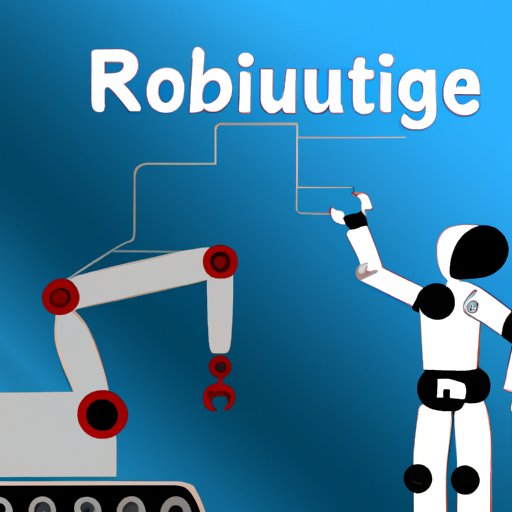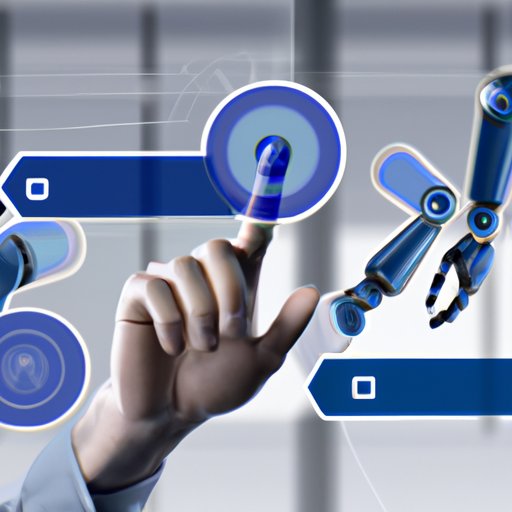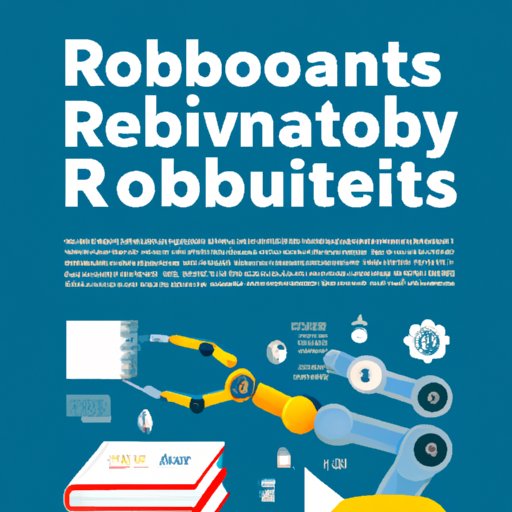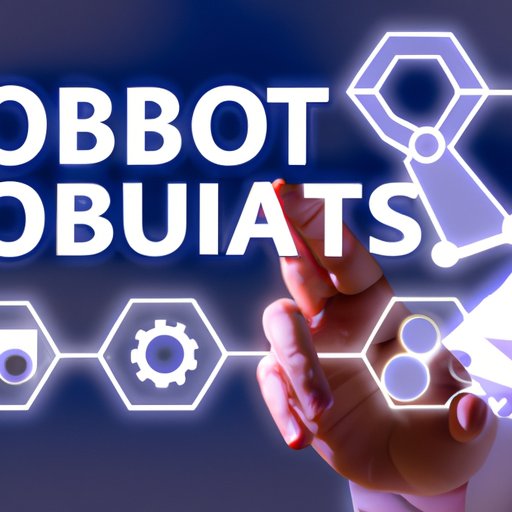Introduction
Robotics and automation have become an integral part of our lives. From manufacturing to customer service, these technologies are changing the way we work, live and interact with each other. But what exactly are robotics and automation? In this article, we will explore what robotics and automation are, why it is important to understand them, and how they are impacting our lives.
Exploring Robotics and Automation: An Overview of the Impact on Our Lives
Robotics and automation are two closely related fields that have been around for decades. Robotics is the science of designing, building, and operating robots. Automation is the use of technology to automate tasks that would otherwise be done by humans. Together, they are transforming the way businesses operate and the way people live their lives.
The Rise of Robotics and Automation in Business
Robotics and automation have revolutionized the way businesses operate. Automation has enabled companies to reduce costs, improve efficiency, and increase productivity. According to a survey conducted by McKinsey & Company, 78% of executives reported that their organizations had already implemented some form of automation in their operations. Additionally, the survey found that the majority of executives believe that automation will continue to drive significant changes in the way their companies operate.
Robots have also made their way into the workplace. Companies are using robots to automate tedious and repetitive tasks such as assembly line work, packaging, and warehousing. According to a report by the International Federation of Robotics, the global industrial robot market was valued at $17.6 billion in 2019 and is projected to reach $30 billion by 2025. This shows the increasing importance of robotics and automation in the business world.
How Robotics and Automation are Changing Everyday Life
Robotics and automation are also having a major impact on our everyday lives. Automation is making it possible for us to do more with less effort. For example, automated systems are being used to optimize traffic flows, provide personalized recommendations, and even help diagnose medical conditions. Robotics is also becoming increasingly prevalent in our homes. Vacuum cleaners, lawn mowers, and even pet care robots are now available to make our lives easier.
The rise of robotics and automation is also transforming the way we shop. Online retailers are using automated systems to process orders faster and more efficiently. Autonomous delivery vehicles are becoming more common as well, allowing customers to receive their orders quickly and conveniently.
How Robot Automation is Changing the Way We Work
Robotics and automation are having a profound effect on the way we work. Automation is making it possible for businesses to automate mundane tasks and processes, freeing up employees to focus on more productive activities. Automation is also improving quality control, reducing human error, and increasing efficiency.
Robots are also being used to perform jobs that were previously considered too dangerous for humans. For example, robots are now being used to inspect hazardous environments such as nuclear power plants and oil rigs. They are also being used to perform surgery and even assist firefighters in dangerous rescue operations.

The Benefits and Challenges of Robotics and Automation
Robotics and automation can bring many benefits to businesses and individuals. Automation can increase efficiency and reduce costs, while robots can perform dangerous or difficult tasks with greater precision than humans. However, there are also potential drawbacks to using robots and automation.
Advantages of Robotics and Automation
Robotics and automation can bring many advantages to businesses and individuals. Automation can increase efficiency, reduce costs, and free up employees to focus on higher-value tasks. Robots can also perform dangerous or difficult tasks with greater precision than humans. Additionally, automation can help reduce human error and improve quality control.
Disadvantages of Robotics and Automation
There are also some potential drawbacks to using robots and automation. Automation can lead to job losses, as robots can replace humans in certain roles. Additionally, robots and automation can be expensive to implement and require ongoing maintenance. Finally, robots and automation can limit creativity and innovation, as they are programmed to perform specific tasks.

Robotics and Automation: What You Need to Know
Understanding the basics of robotics and automation is essential for anyone who wants to stay ahead of the curve. There are several key terms and concepts that everyone should know, including robot programming, sensors, actuators, and artificial intelligence.
Understanding the Basics of Robotics and Automation
Robot programming is the process of instructing a robot to perform a task. Sensors are devices that detect changes in the environment and send signals to the robot. Actuators are devices that enable the robot to move and manipulate objects. Artificial intelligence (AI) is the ability of a computer to learn from its environment and make decisions based on data.
Key Terms and Concepts
Robotics and automation technologies are constantly evolving. It’s important to stay up to date on the latest developments in order to stay competitive. Key terms and concepts to understand include machine learning, natural language processing, computer vision, and Internet of Things (IoT).
The Future of Robotics and Automation: What’s Next?
Robotics and automation are continuing to evolve and expand. As these technologies become more advanced, they will open up new possibilities and applications. Here are some potential applications of robotics and automation in the future.
Potential Applications
Robotics and automation have the potential to revolutionize many industries. Autonomous vehicles could revolutionize transportation, while robots could be used to perform complex surgeries and assist doctors in emergency rooms. Automation could also be used to monitor crops and manage natural disasters. The possibilities are endless.
Preparing for the Future
As robotics and automation continue to advance, businesses must prepare for the future. To remain competitive, organizations must invest in training and education to ensure their workforce is prepared for the new technologies. Additionally, businesses must ensure that their processes and systems are ready to take advantage of the new opportunities that robotics and automation will bring.

A Comprehensive Guide to Robotics and Automation Technologies
Robotics and automation technologies come in many forms. Different types of robots and automation solutions can be used to complete various tasks. Here’s a comprehensive guide to the different types of robots and automation technologies available.
Different Types of Robots
Robots come in many shapes and sizes. Industrial robots are used for manufacturing and assembly line tasks, while mobile robots are used for navigation and transport. Service robots are designed to interact with humans, while social robots are designed to communicate and respond to emotions. Finally, autonomous robots are designed to act independently.
Automation Solutions and Technologies
Automation solutions are used to automate manual processes. Common automation technologies include artificial intelligence (AI), machine learning, natural language processing, computer vision, and the Internet of Things (IoT). These technologies can be used to automate a wide range of tasks, from analyzing customer data to managing inventory.
Conclusion
Robotics and automation are transforming the way we live and work. They are making it possible for us to do more with less effort, while also helping businesses become more efficient and productive. While there are potential drawbacks to these technologies, their potential benefits far outweigh any risks. As these technologies continue to evolve, it’s important to stay informed and prepared for the future.
(Note: Is this article not meeting your expectations? Do you have knowledge or insights to share? Unlock new opportunities and expand your reach by joining our authors team. Click Registration to join us and share your expertise with our readers.)
